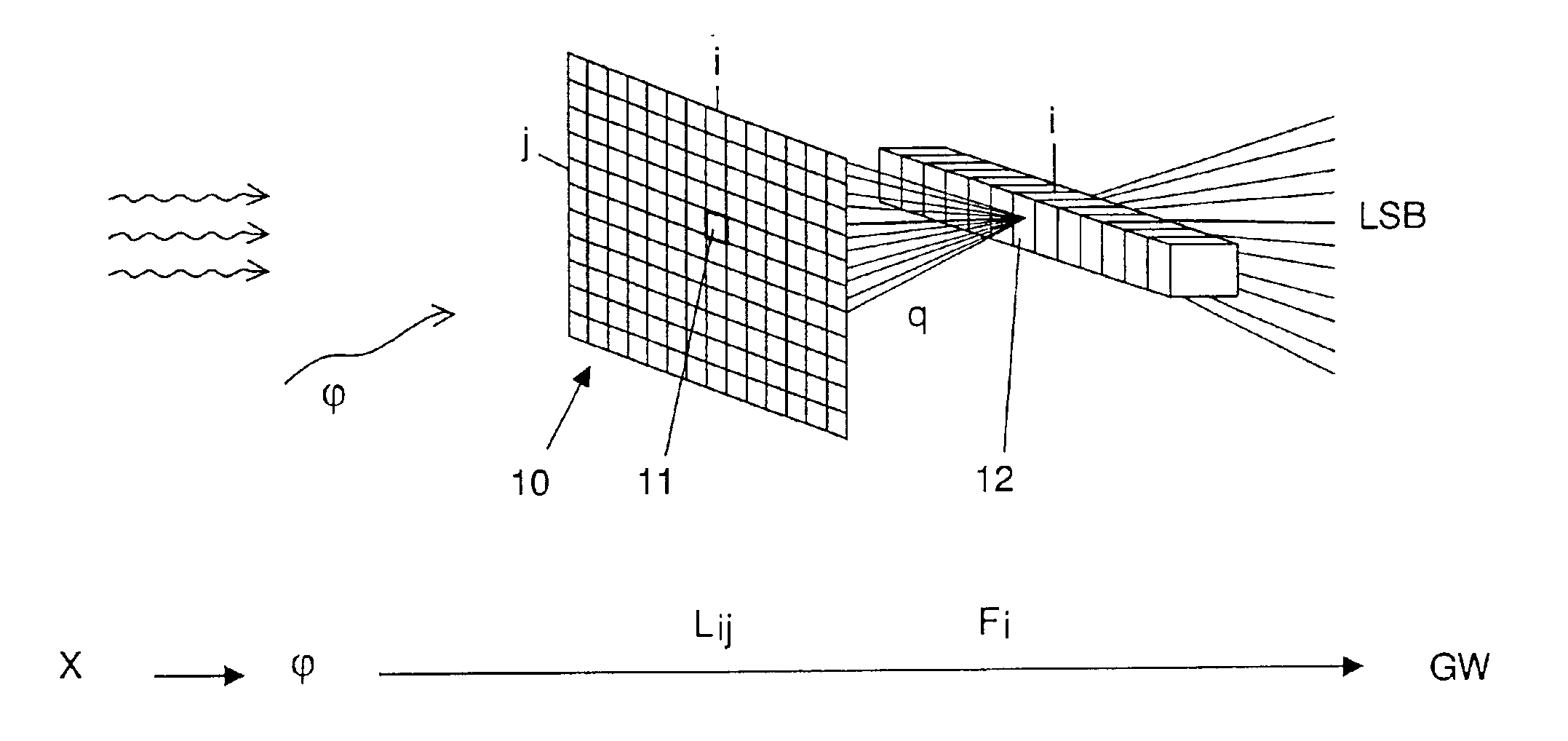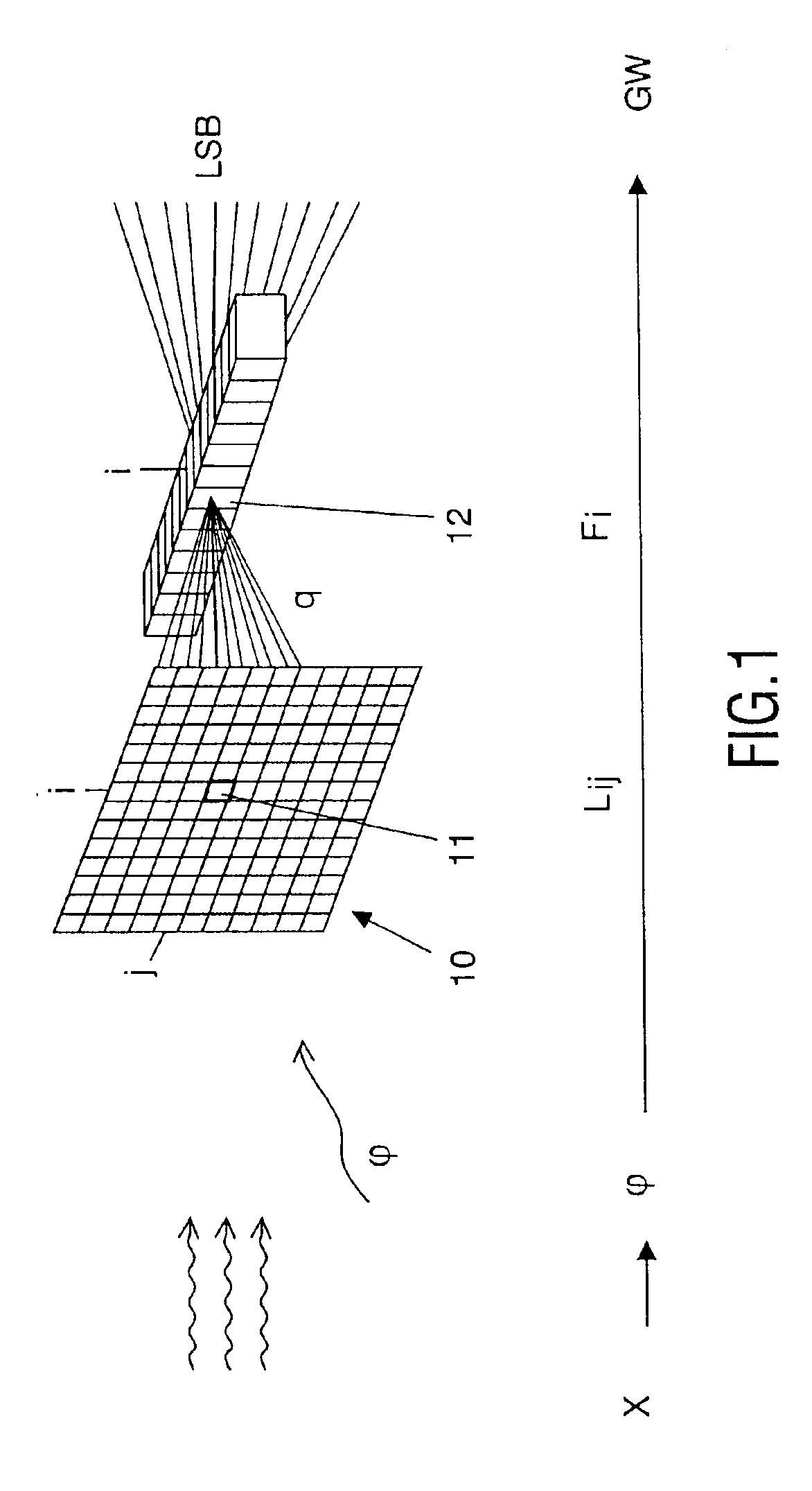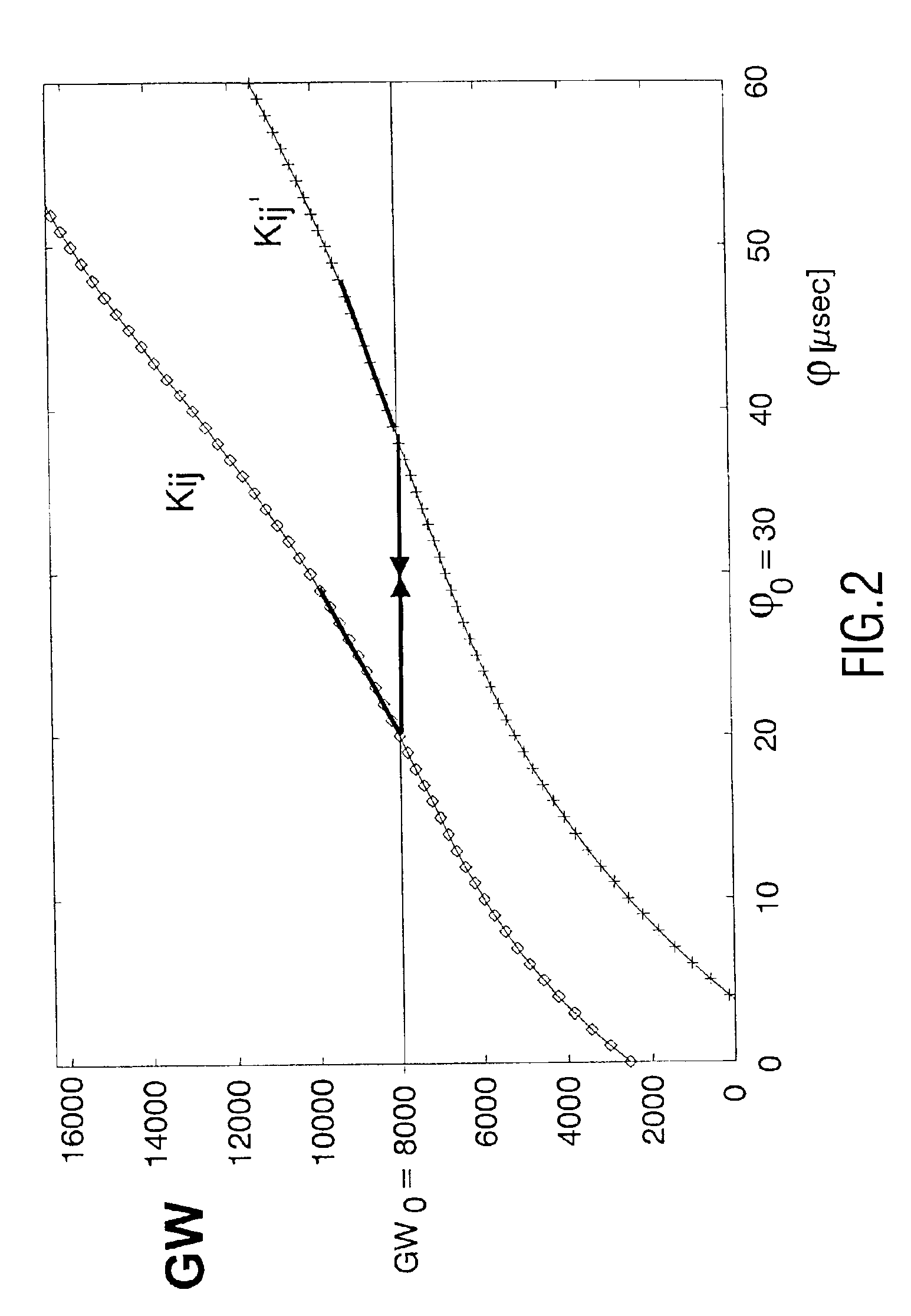Method for the correction of unequal conversion characteristics of image sensors
a technology of image sensor and conversion characteristic, which is applied in the field of method for correction of unequal conversion characteristic of image sensor, can solve the problems that the correction that can be achieved through such a method is not enough to prevent the occurrence of disturbing artifacts, and may occur at the output of unequal secondary image signals, so as to achieve high image quality
- Summary
- Abstract
- Description
- Claims
- Application Information
AI Technical Summary
Benefits of technology
Problems solved by technology
Method used
Image
Examples
Embodiment Construction
FIG. 1 is a diagrammatic representation of the construction of a flat dynamic X-ray detector (FDXD). The X-ray detector includes a matrix-like sensor arrangement 10 of individual image sensors 11 (pixels), the image sensors 11 being organized in rows bearing the index j and columns bearing the index i. The image sensors 11 of a column i are all connected to the same processing unit 12 in which amplification and analog-to-digital conversion of the primary image signals read out by the image sensors 11 take place. The primary image signals may notably be charges q. Because the image sensors 11 are read out one row after the other, in each read-out operation each processing unit 12 has to process only the signal from a single image sensor 11, so that no conflicts arise despite the multiple responsibilities of a processing unit 12. The output of the processing units 12 carries the secondary image signals GW which are delivered to the environment and are formed by digitized grey values.
F...
PUM
 Login to View More
Login to View More Abstract
Description
Claims
Application Information
 Login to View More
Login to View More - R&D
- Intellectual Property
- Life Sciences
- Materials
- Tech Scout
- Unparalleled Data Quality
- Higher Quality Content
- 60% Fewer Hallucinations
Browse by: Latest US Patents, China's latest patents, Technical Efficacy Thesaurus, Application Domain, Technology Topic, Popular Technical Reports.
© 2025 PatSnap. All rights reserved.Legal|Privacy policy|Modern Slavery Act Transparency Statement|Sitemap|About US| Contact US: help@patsnap.com



